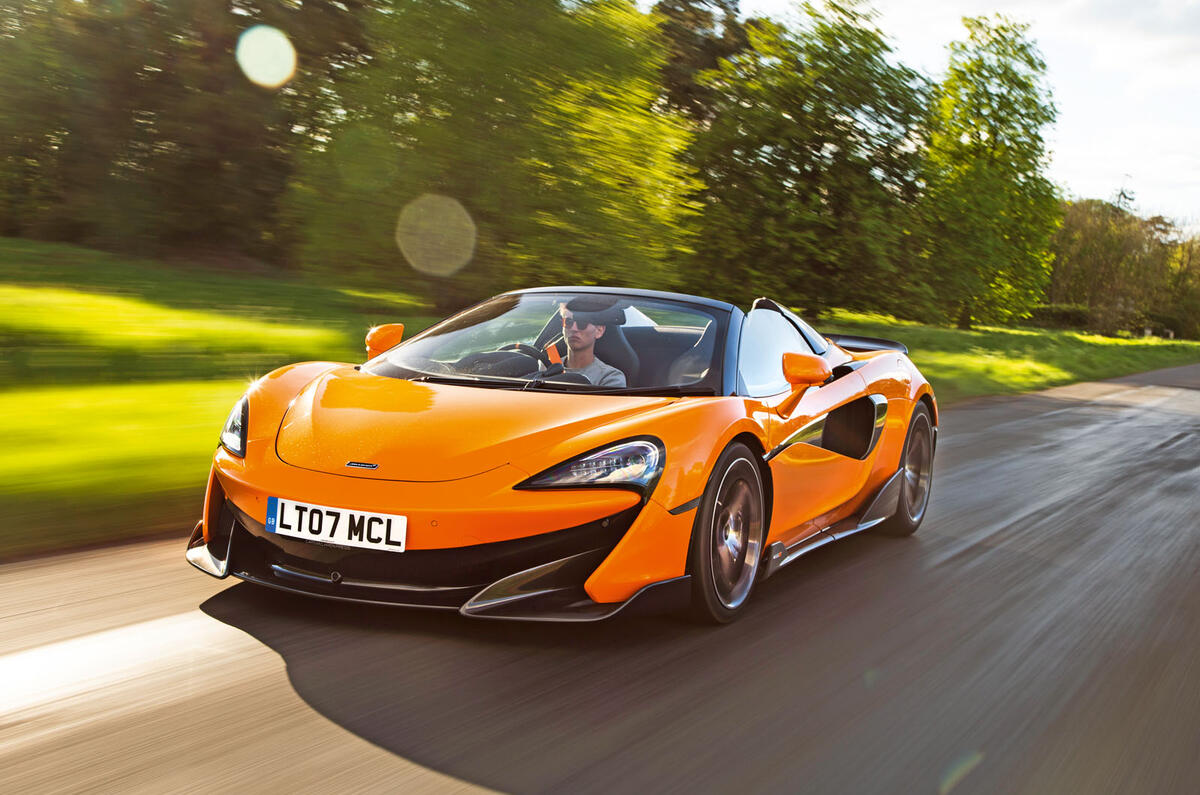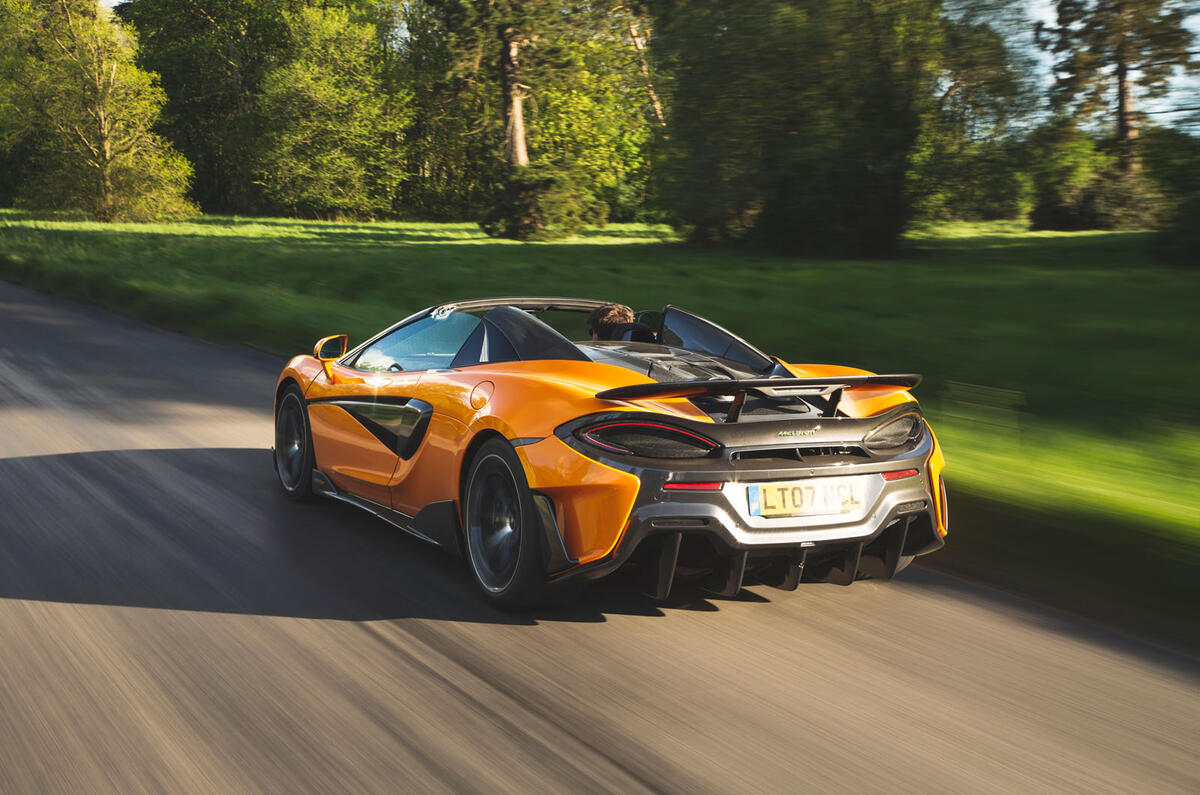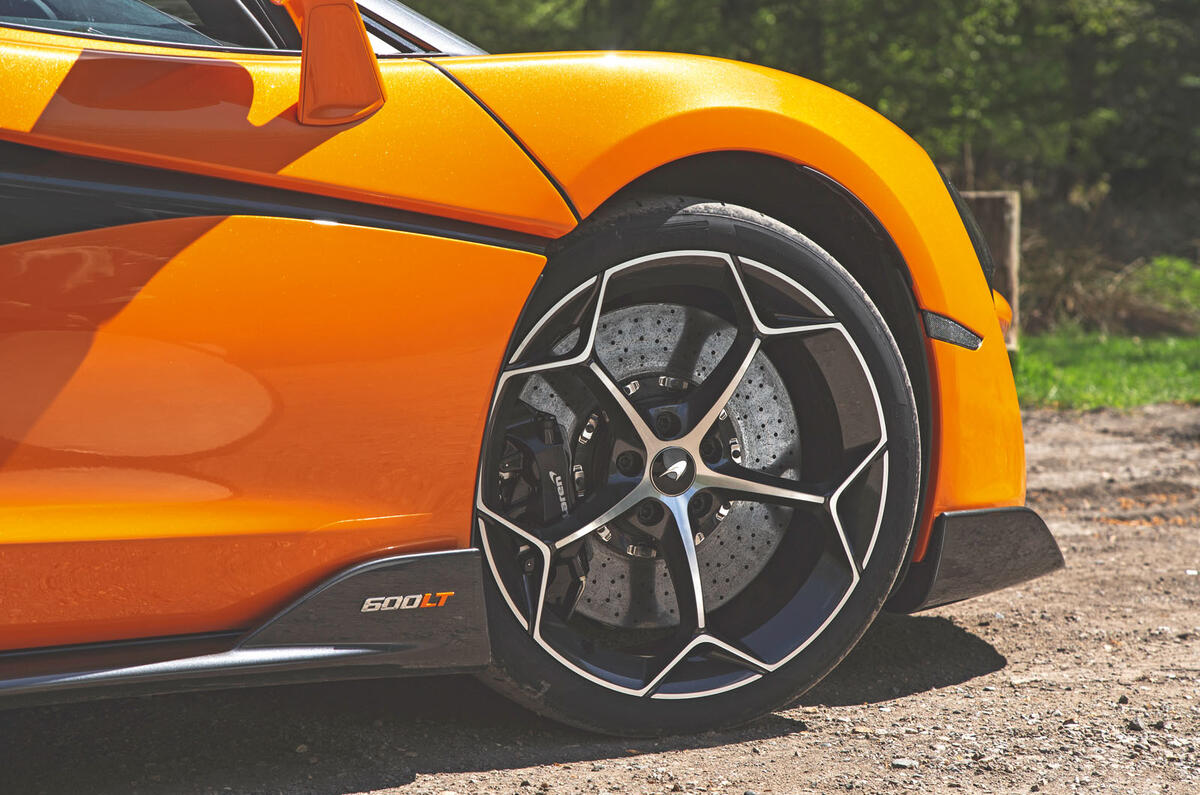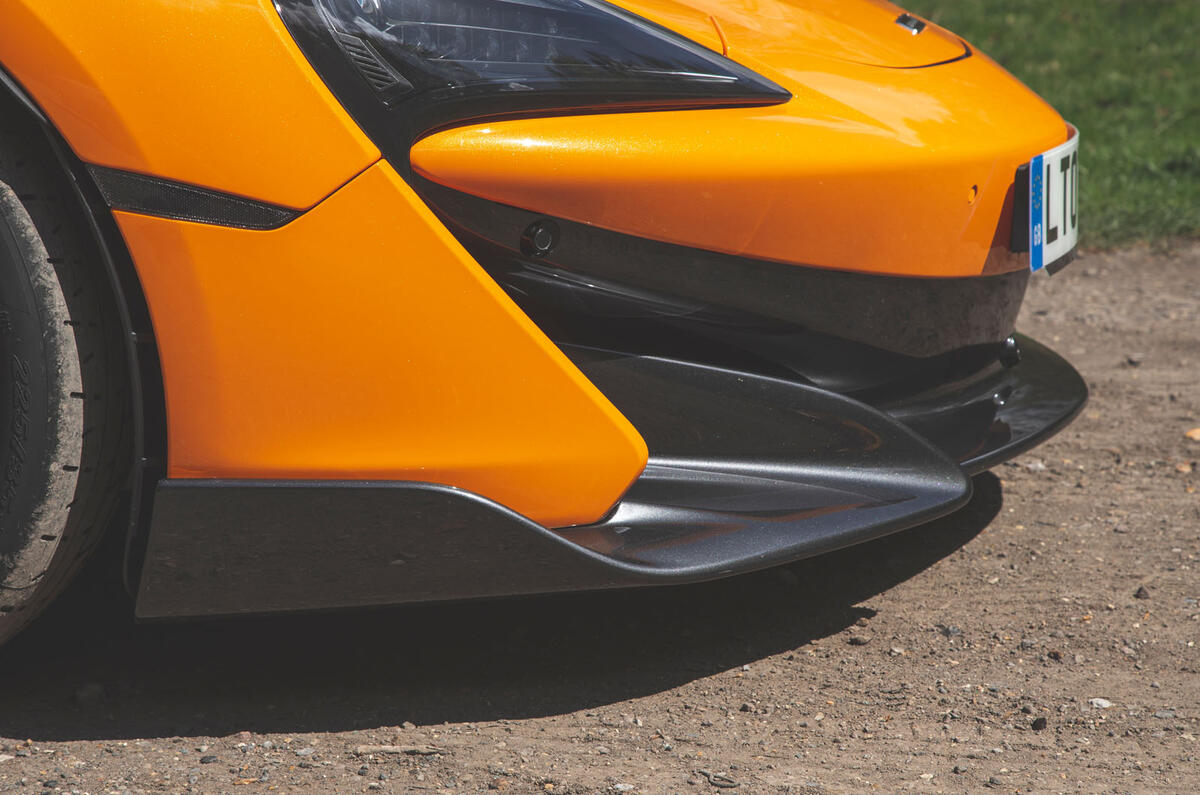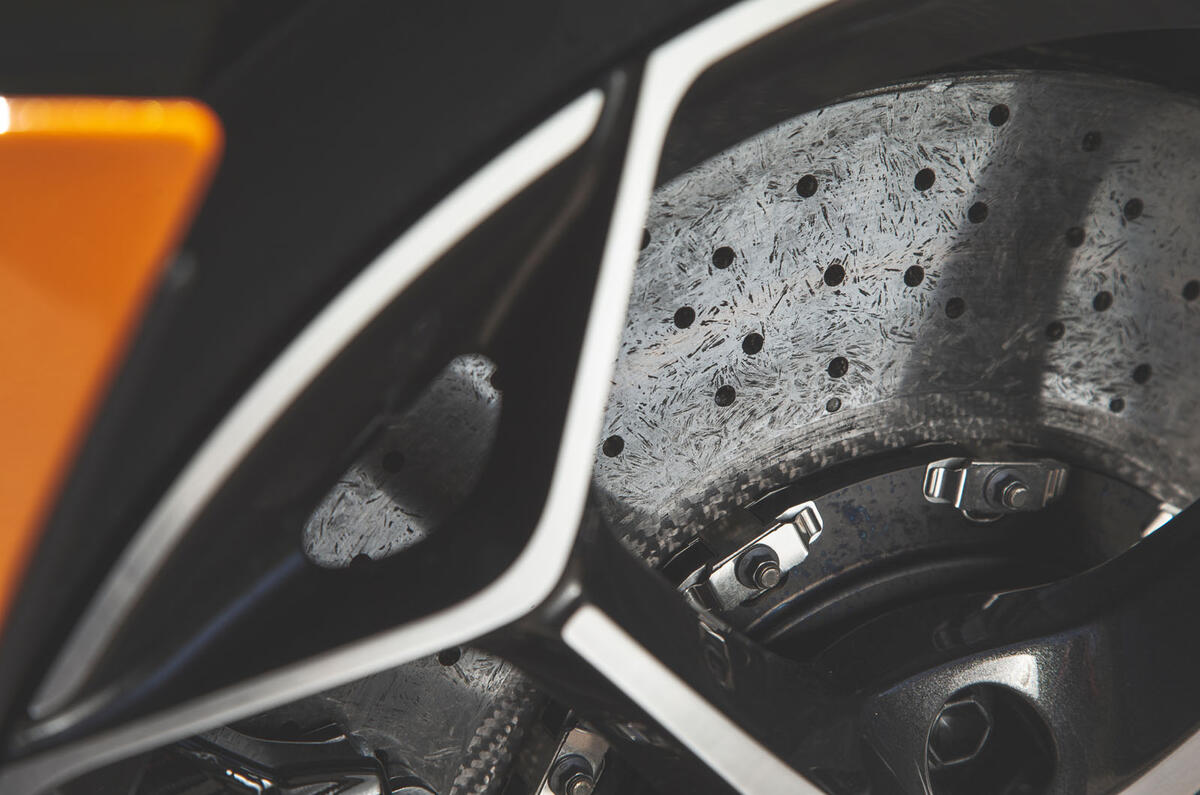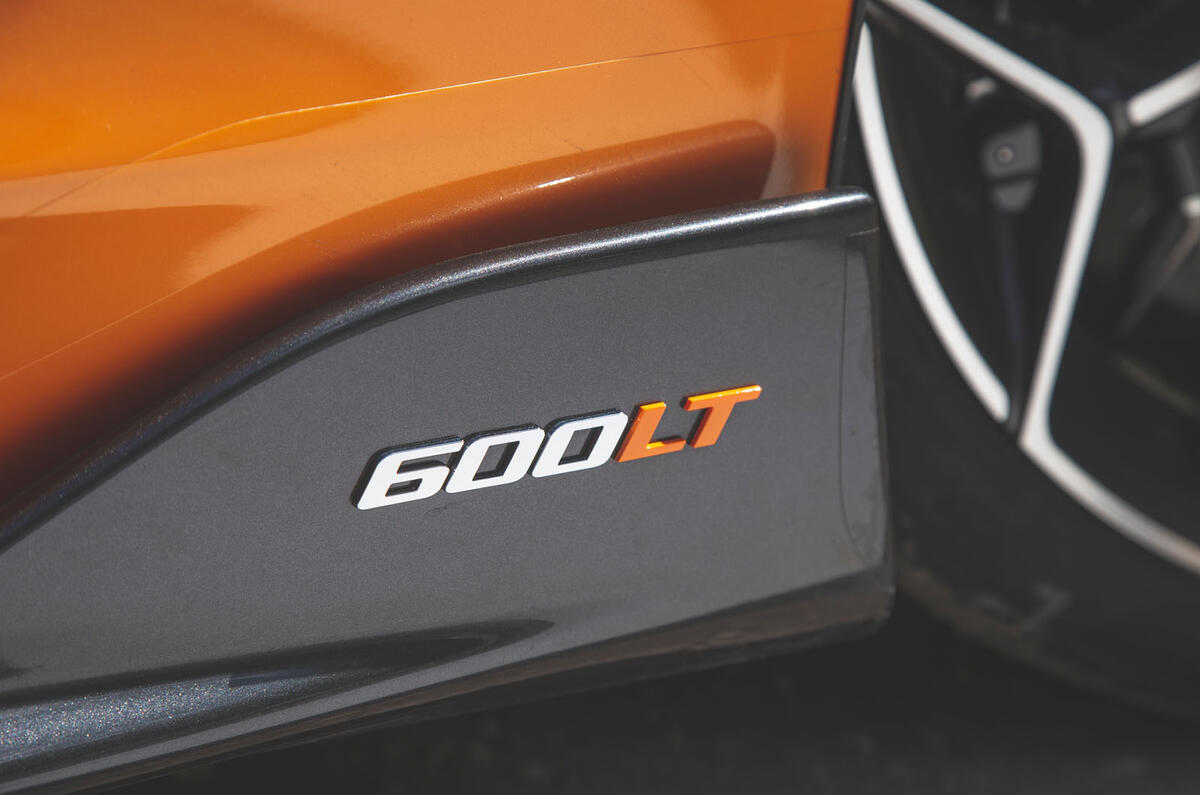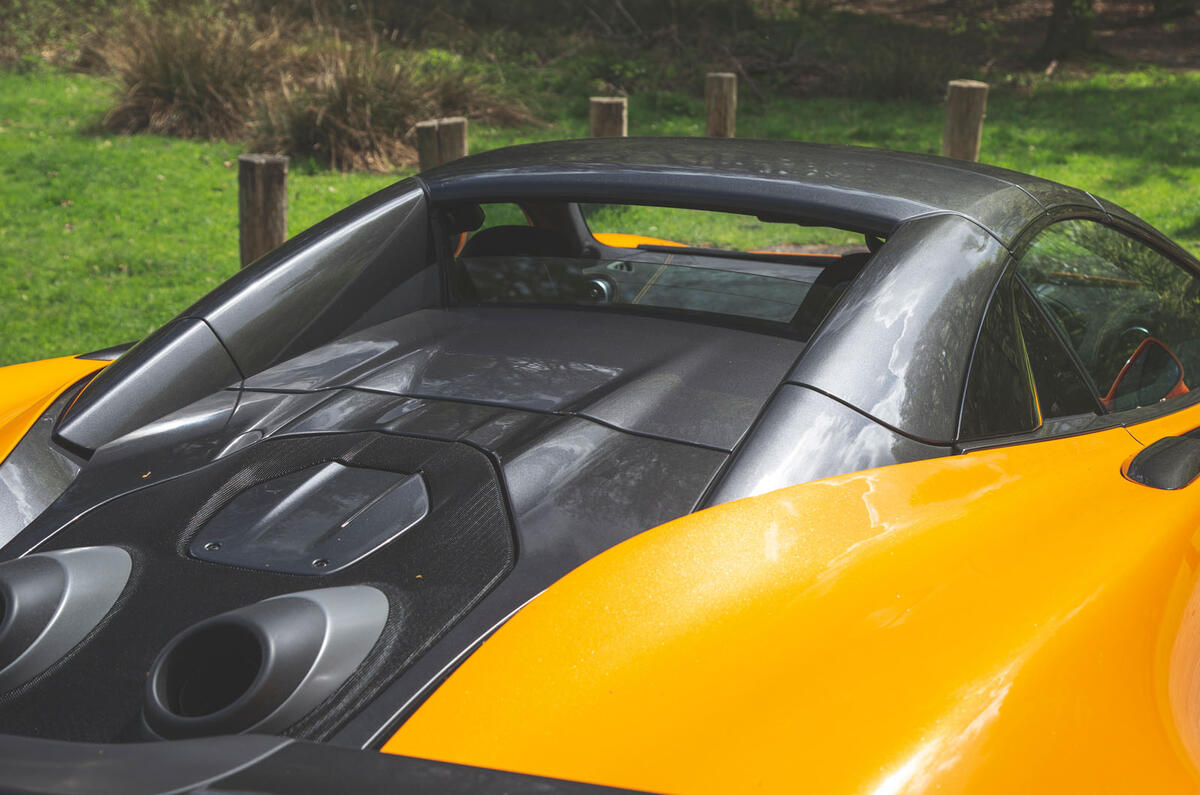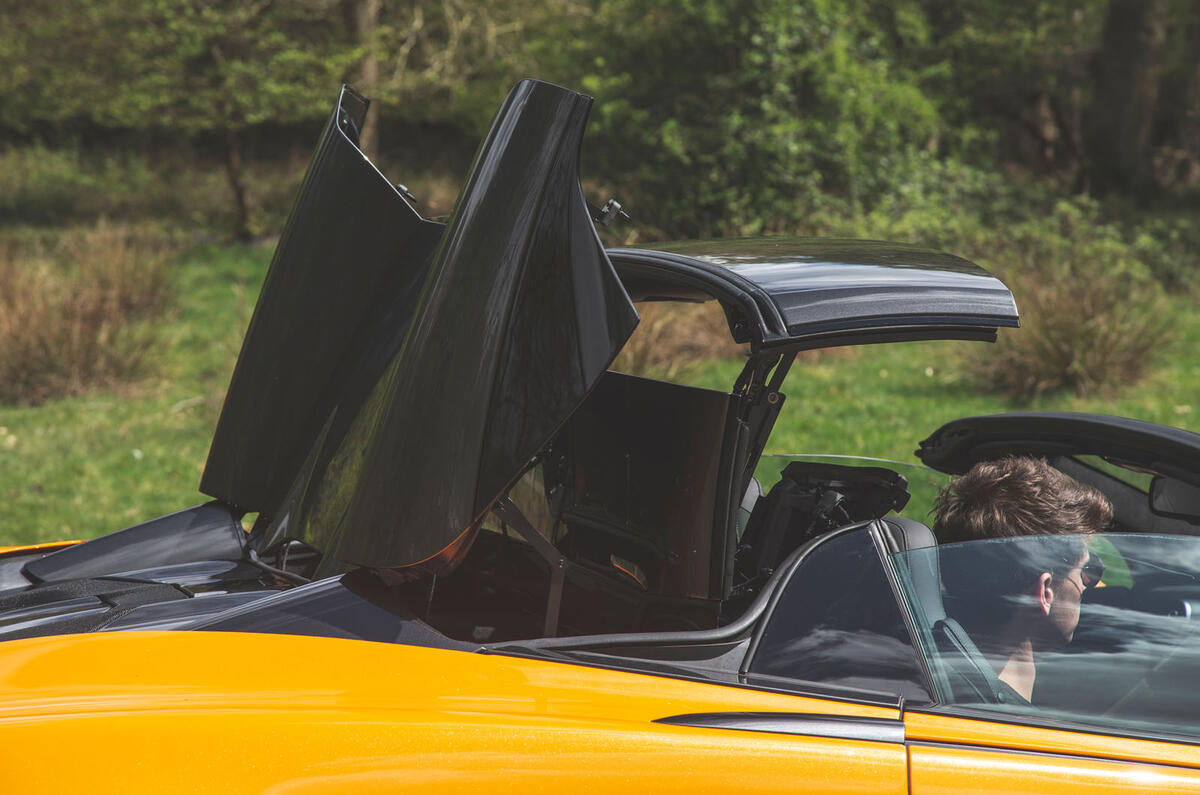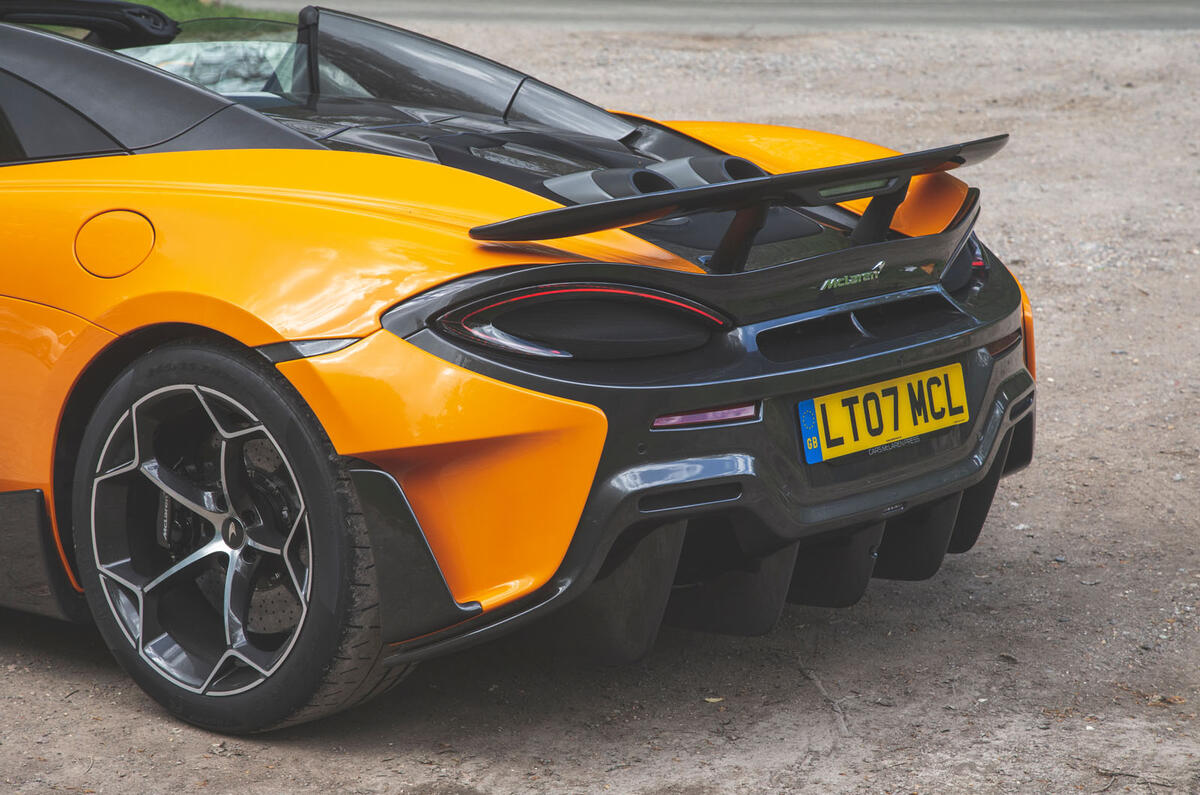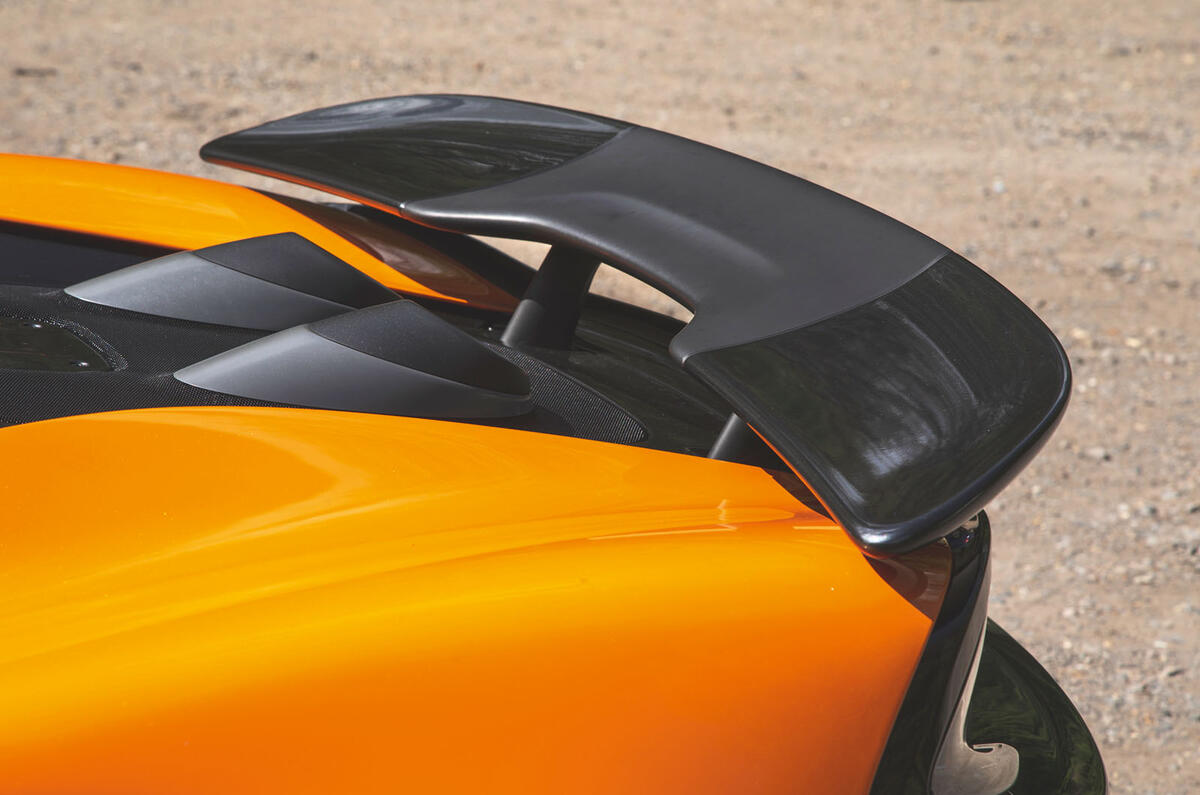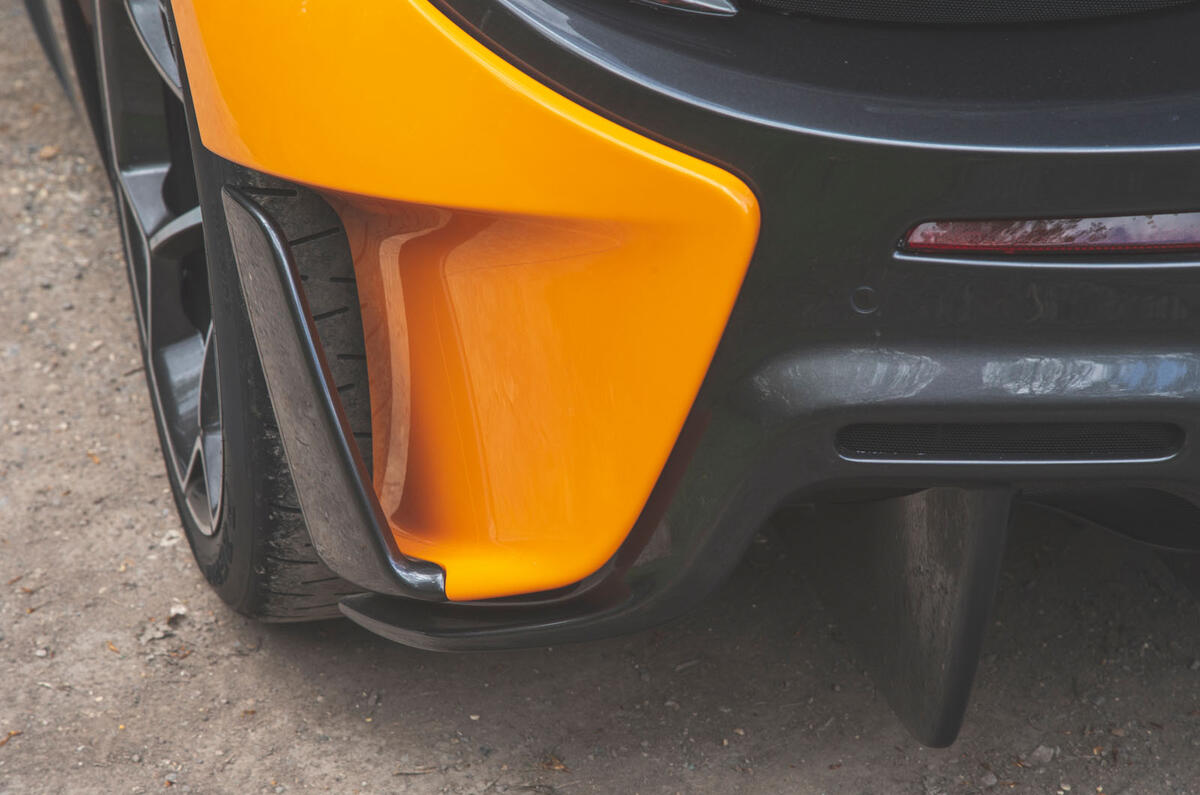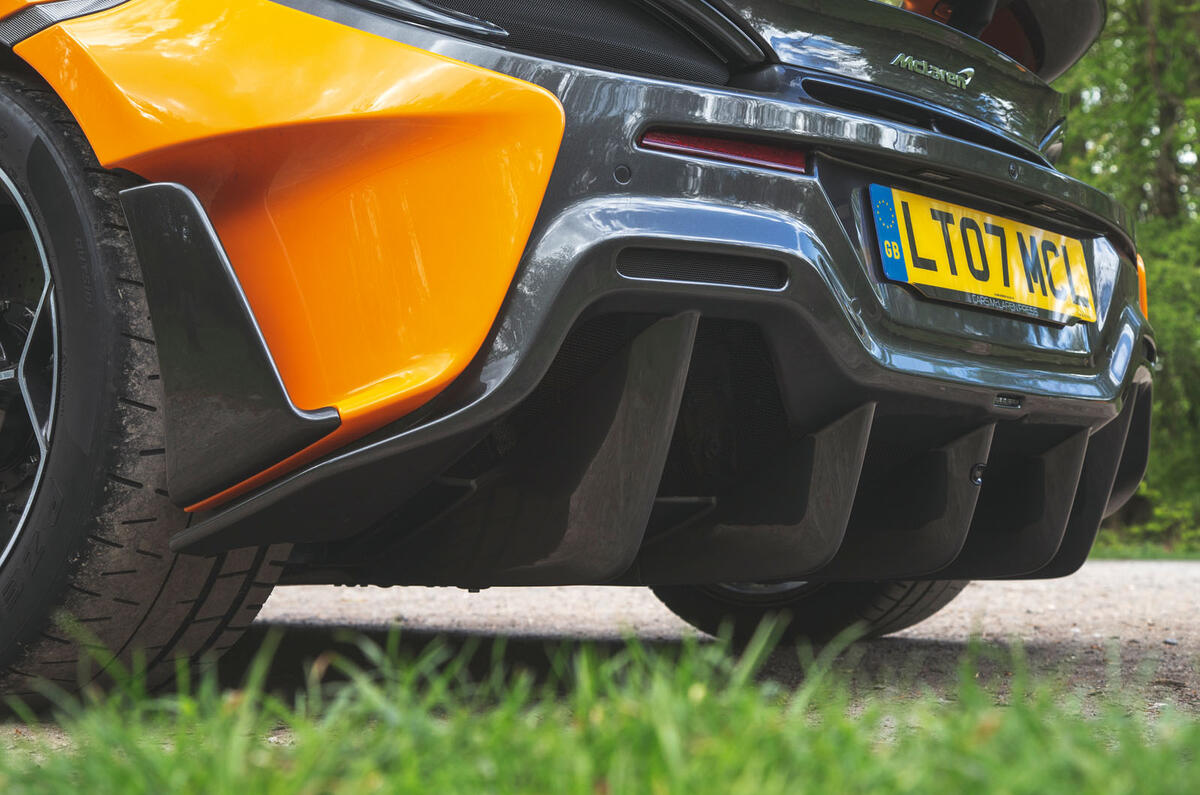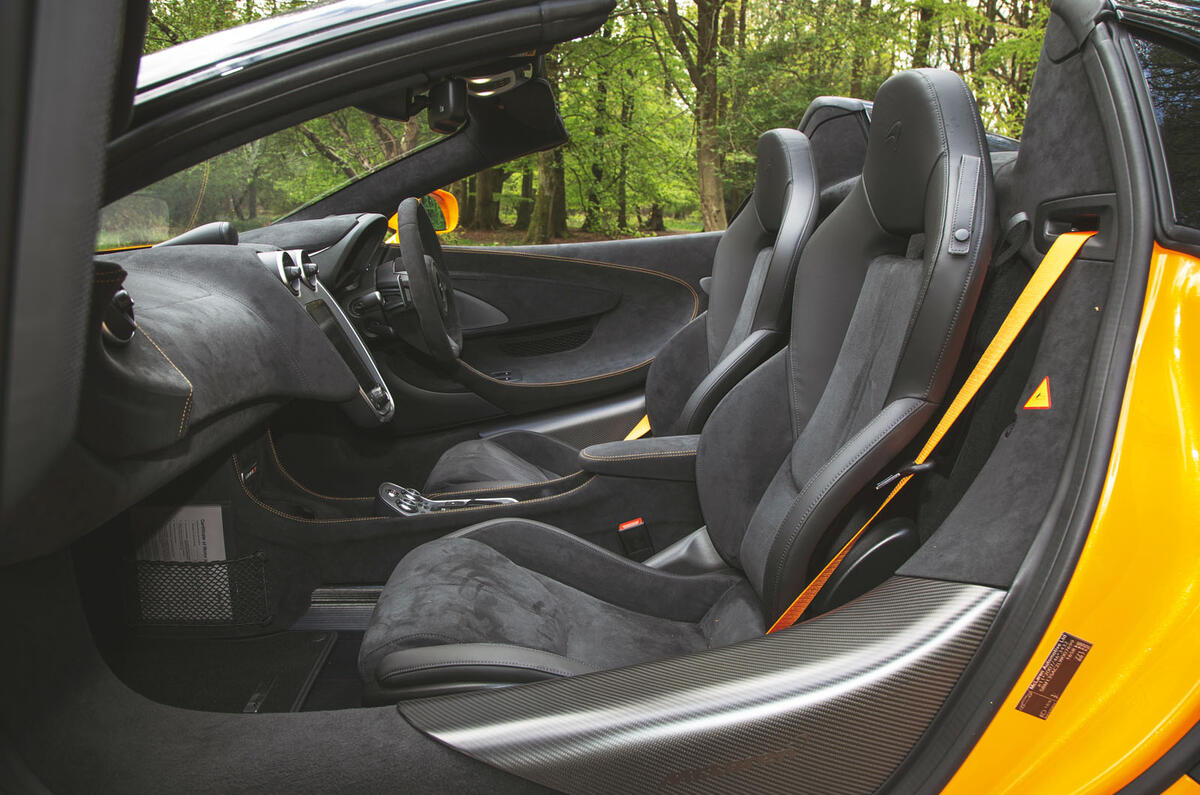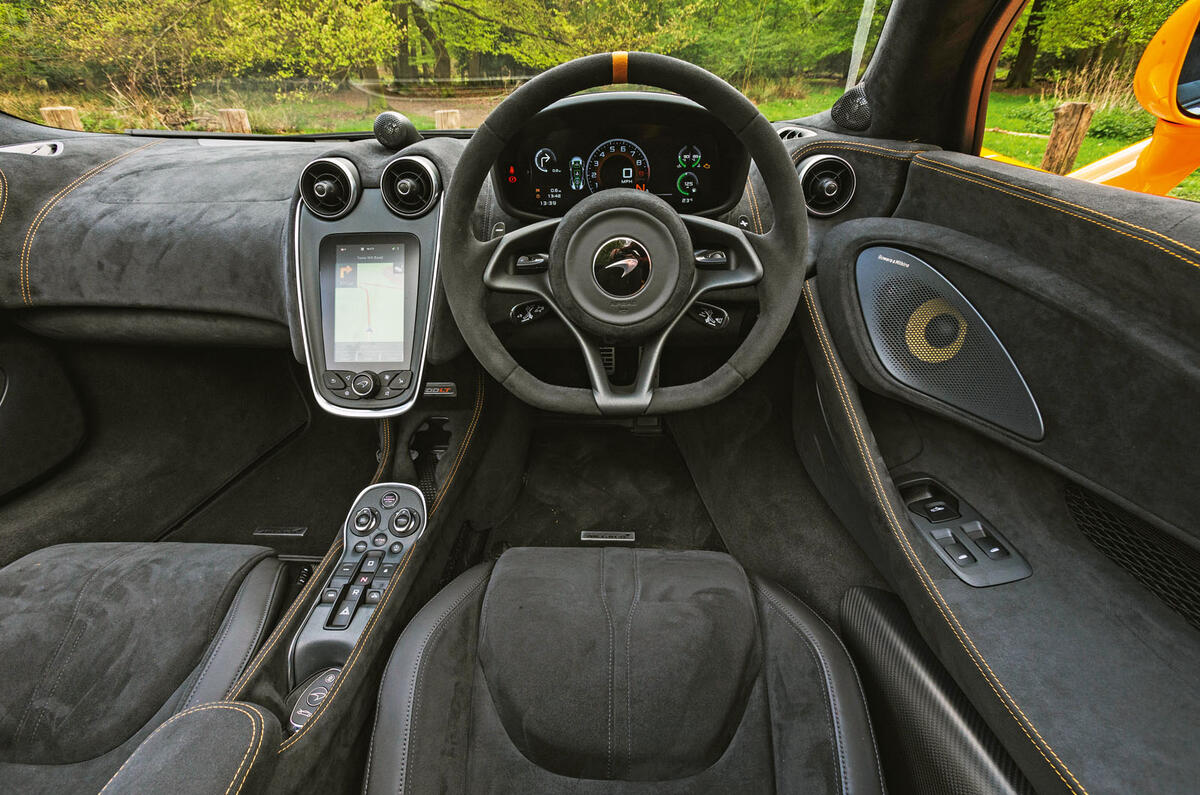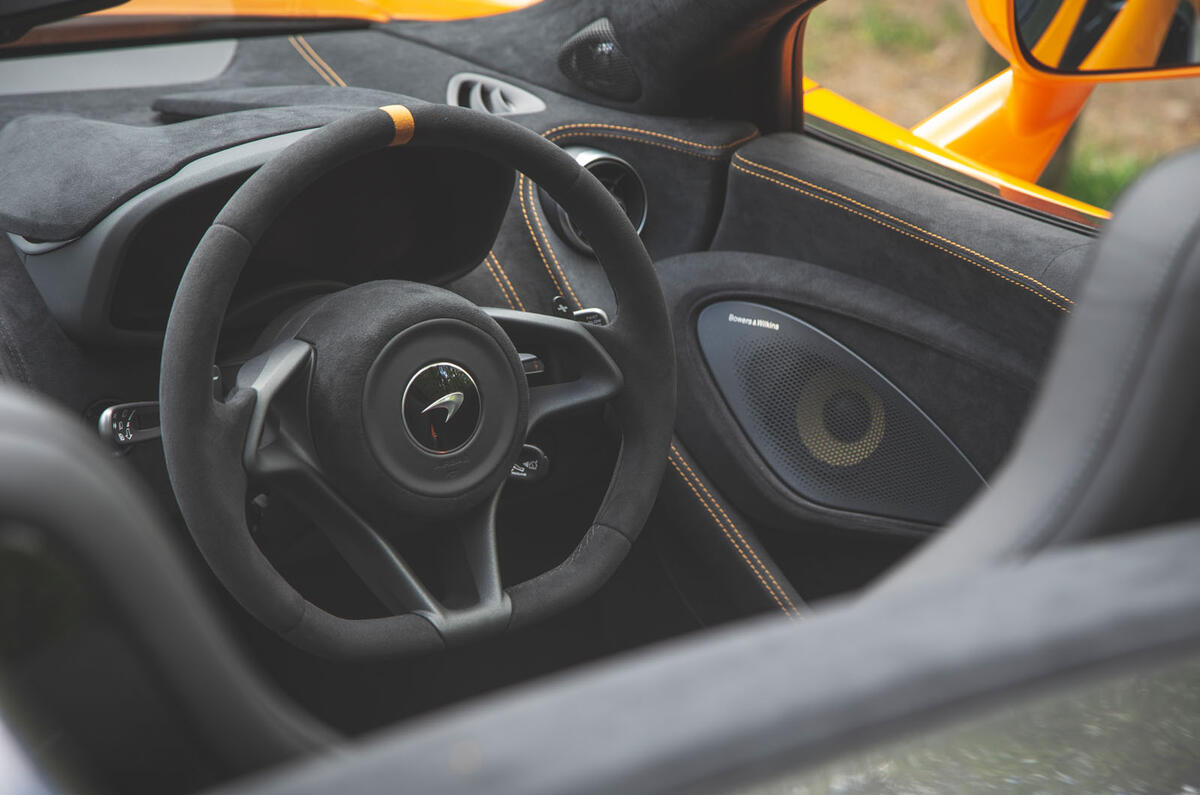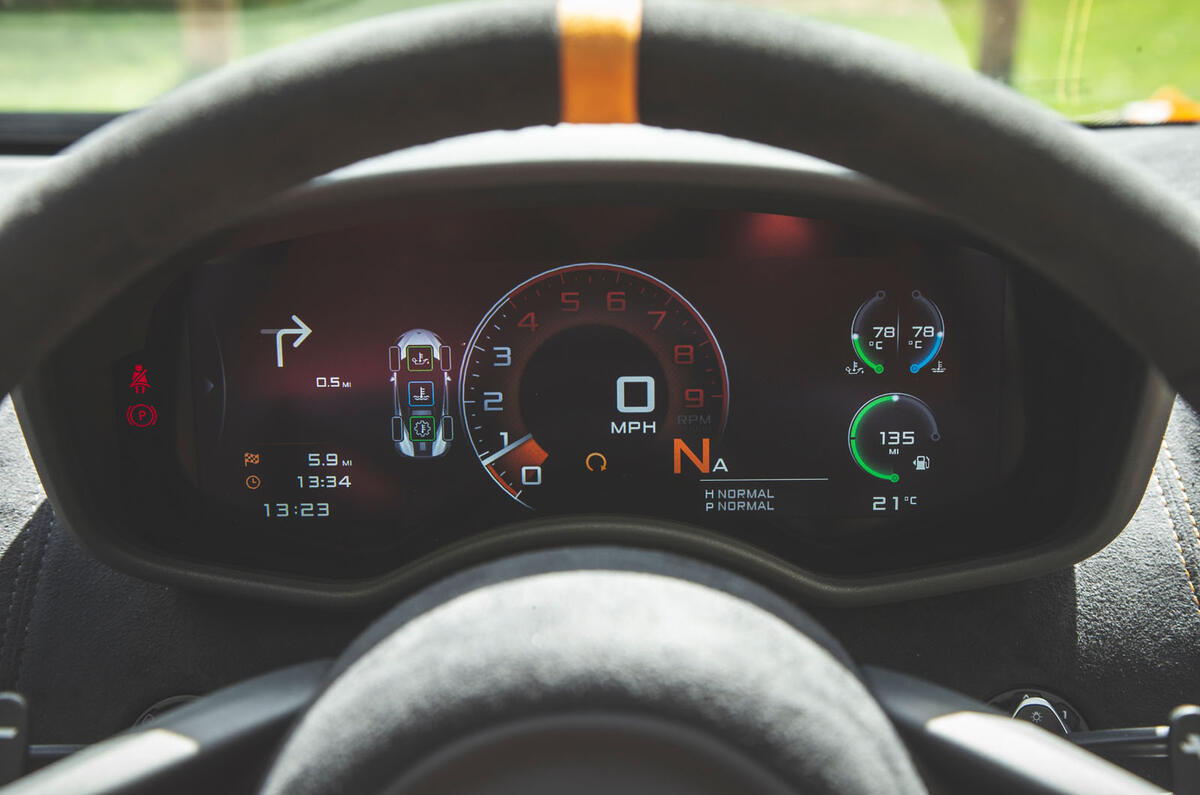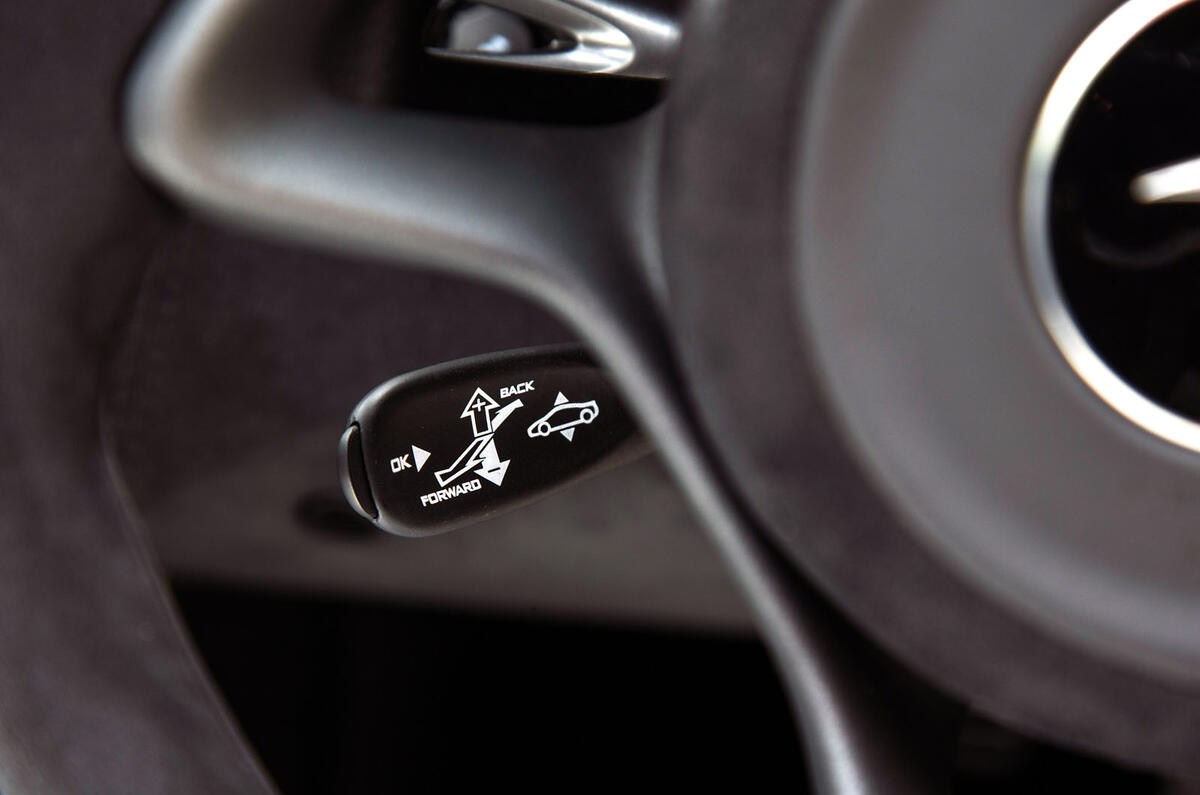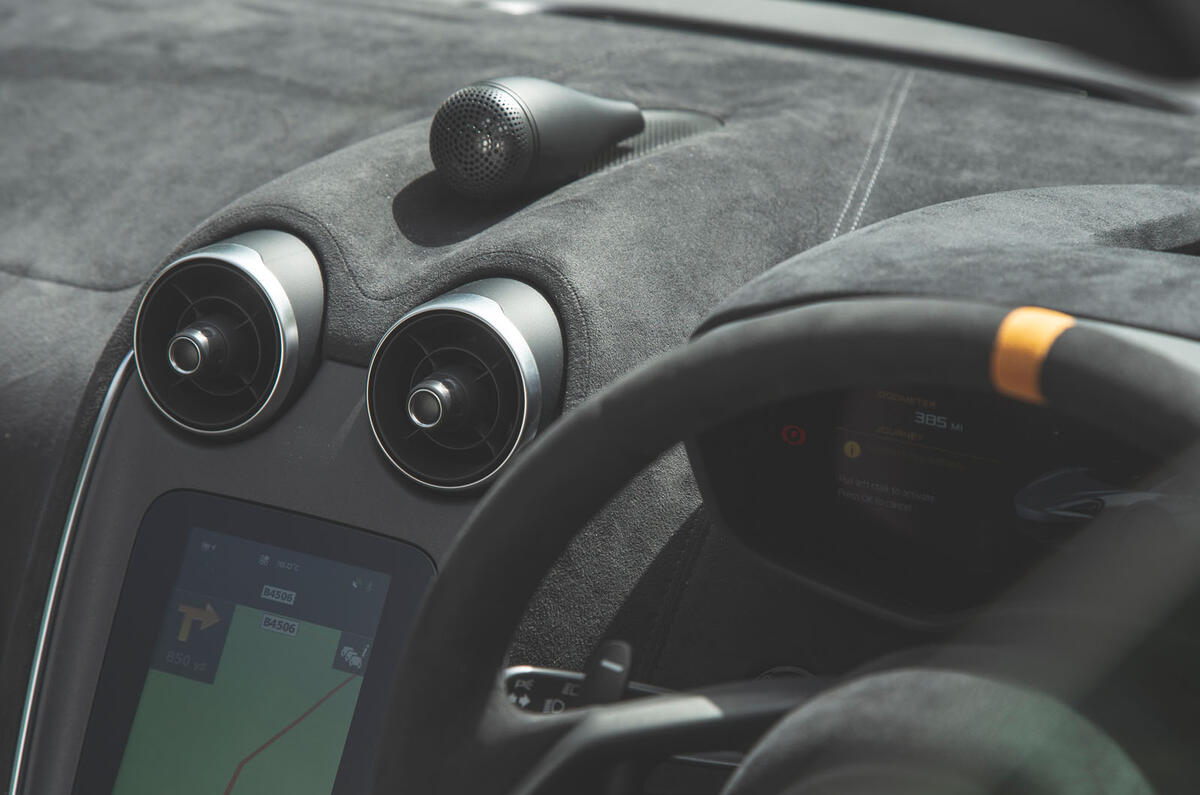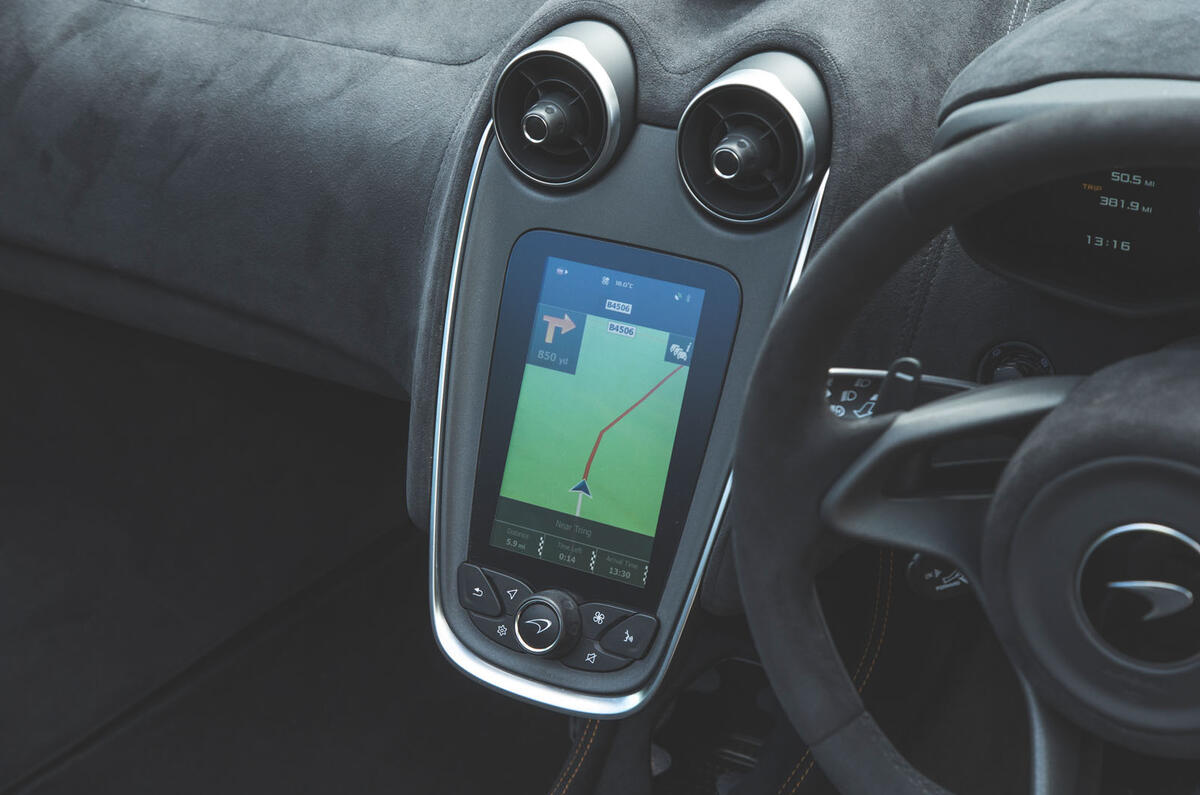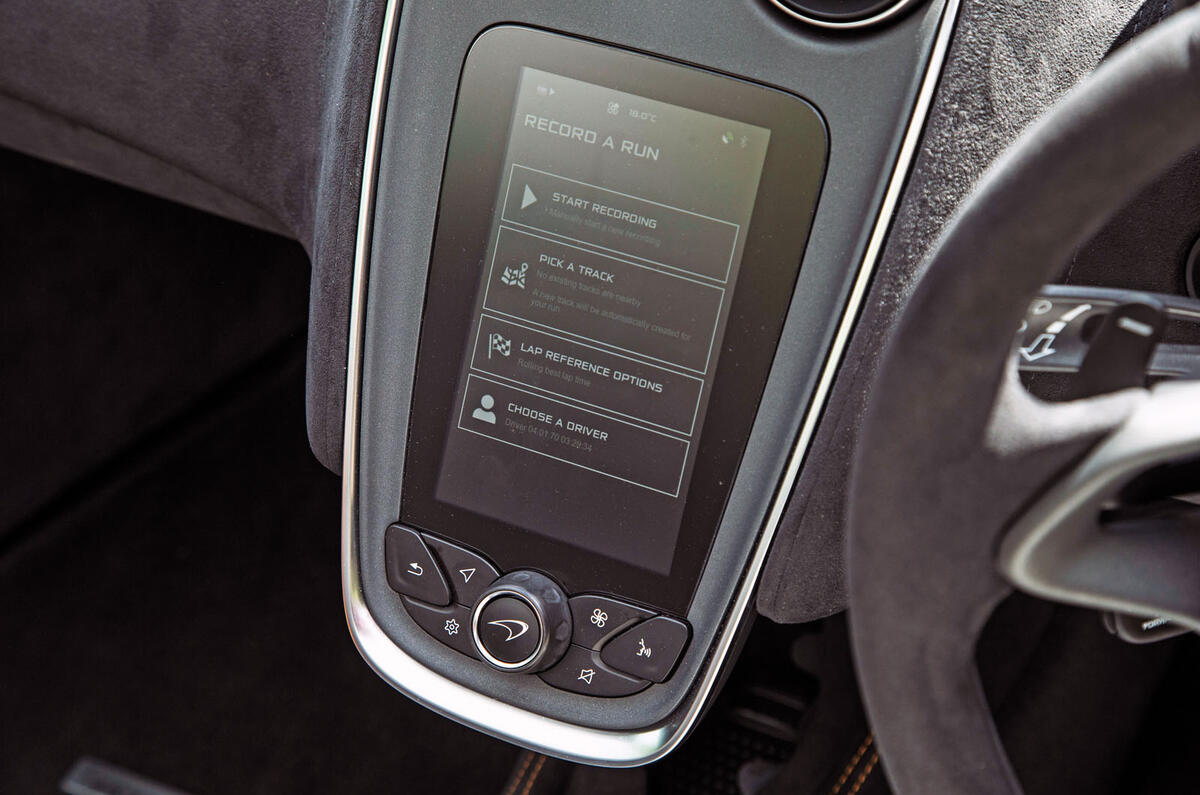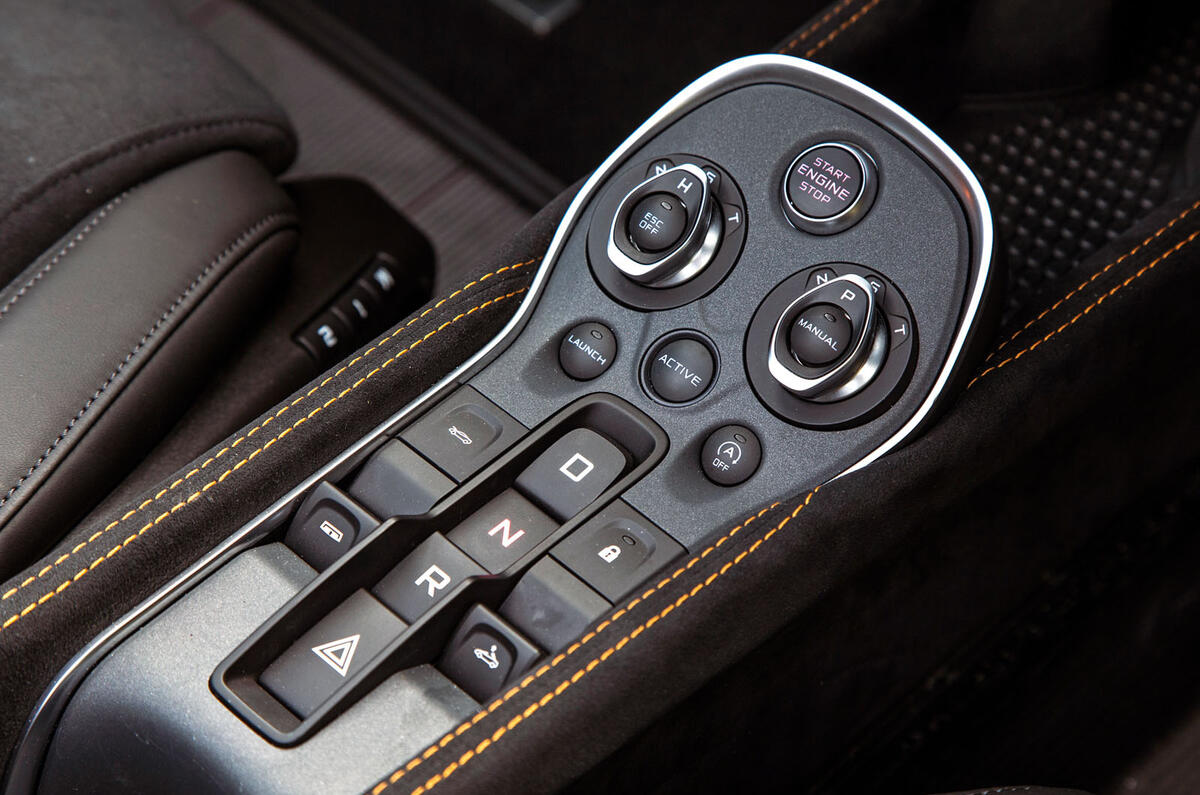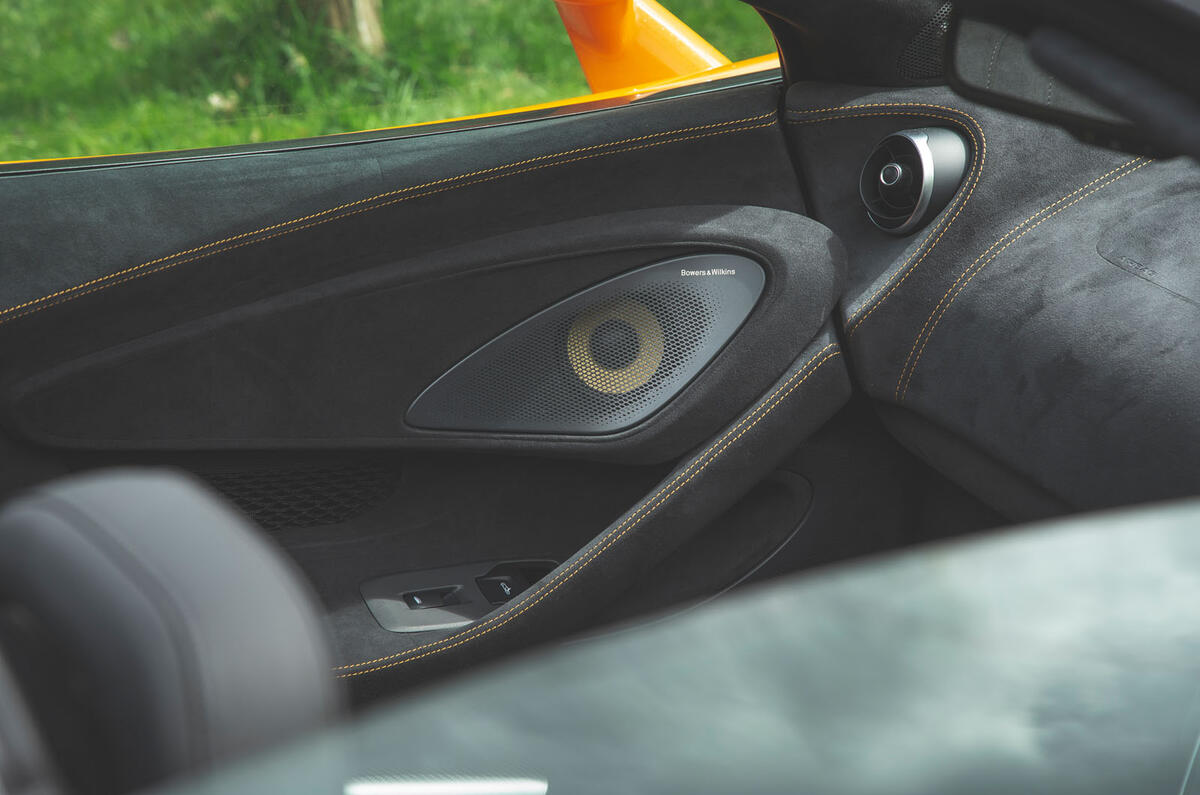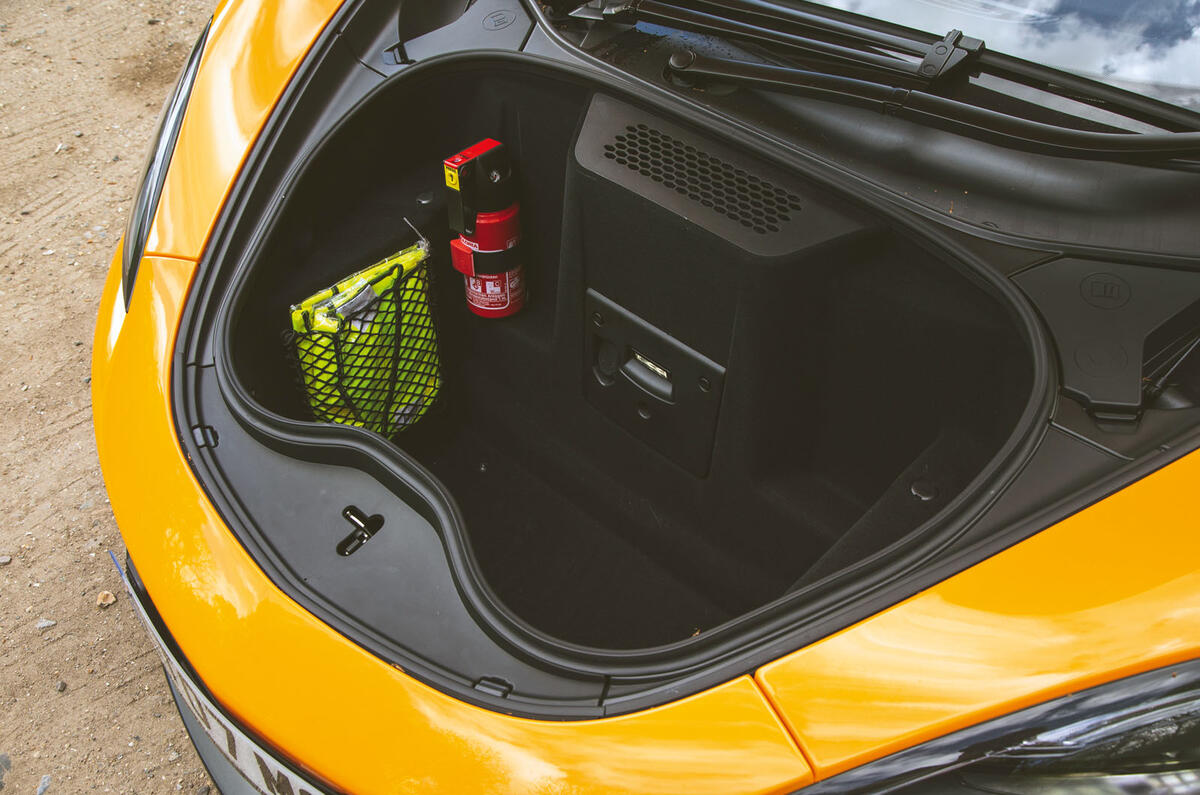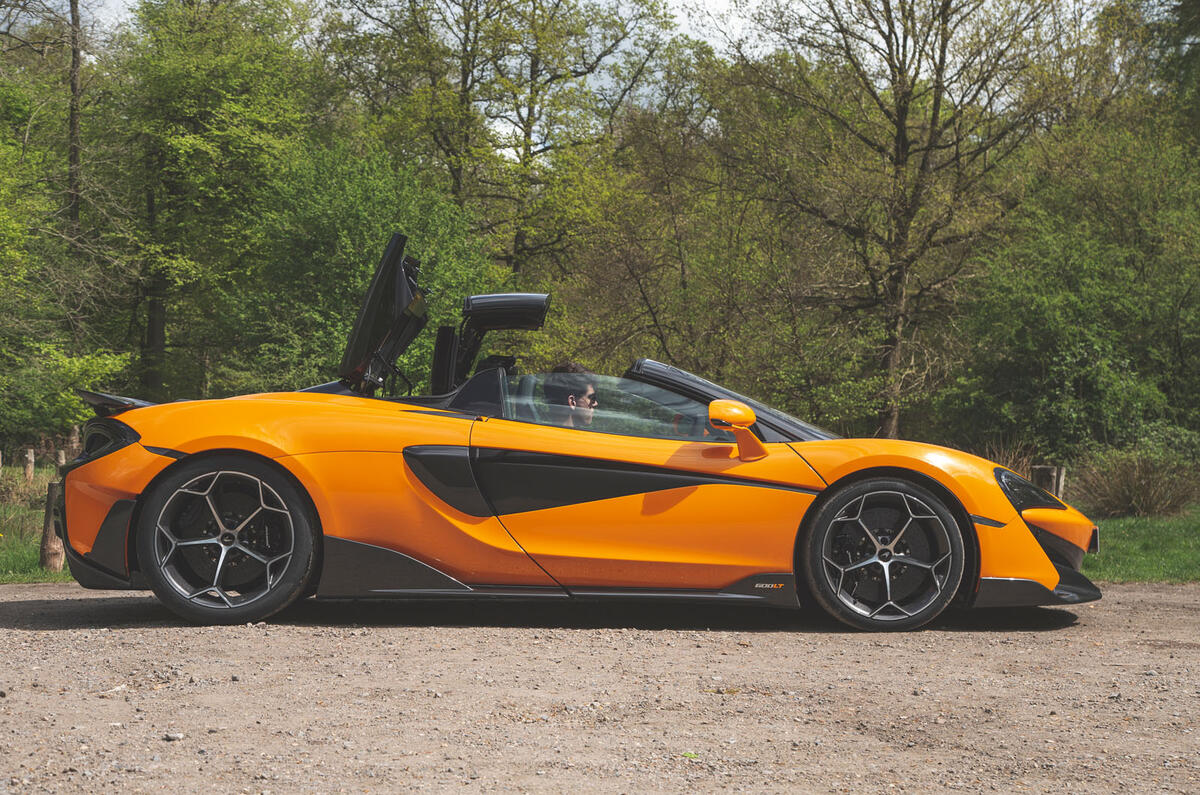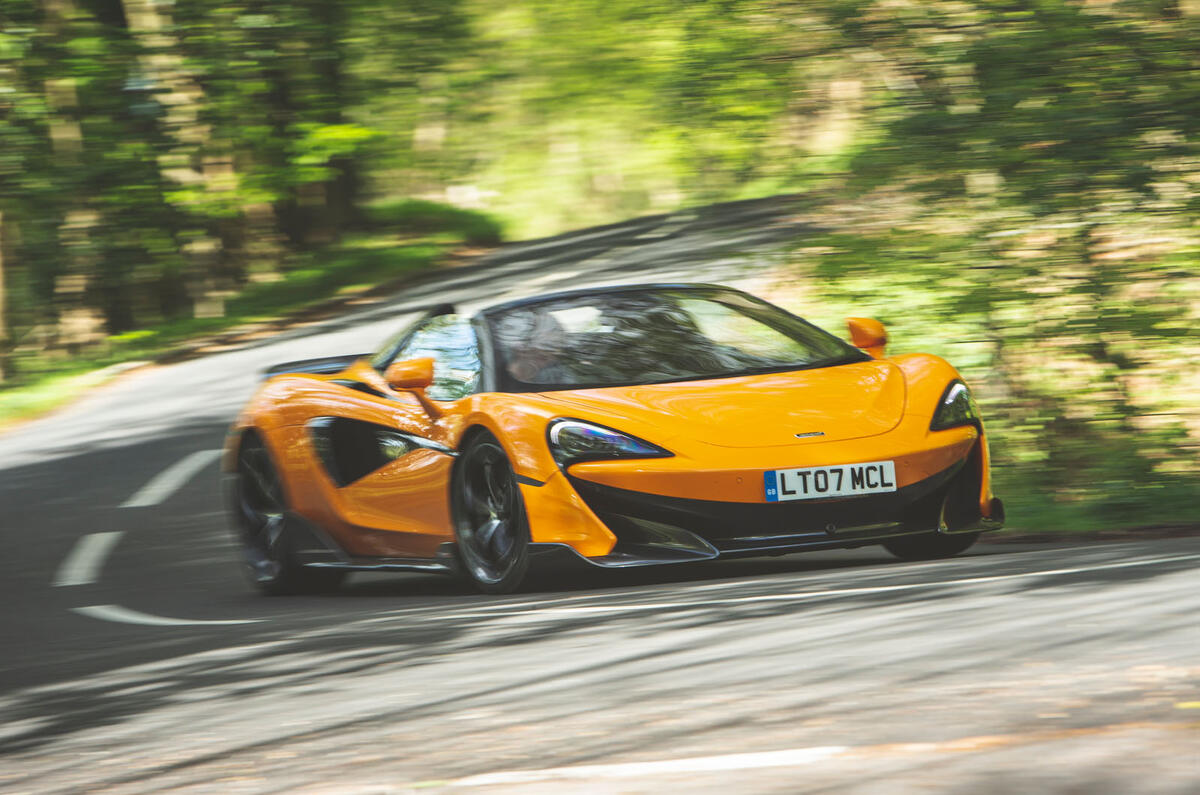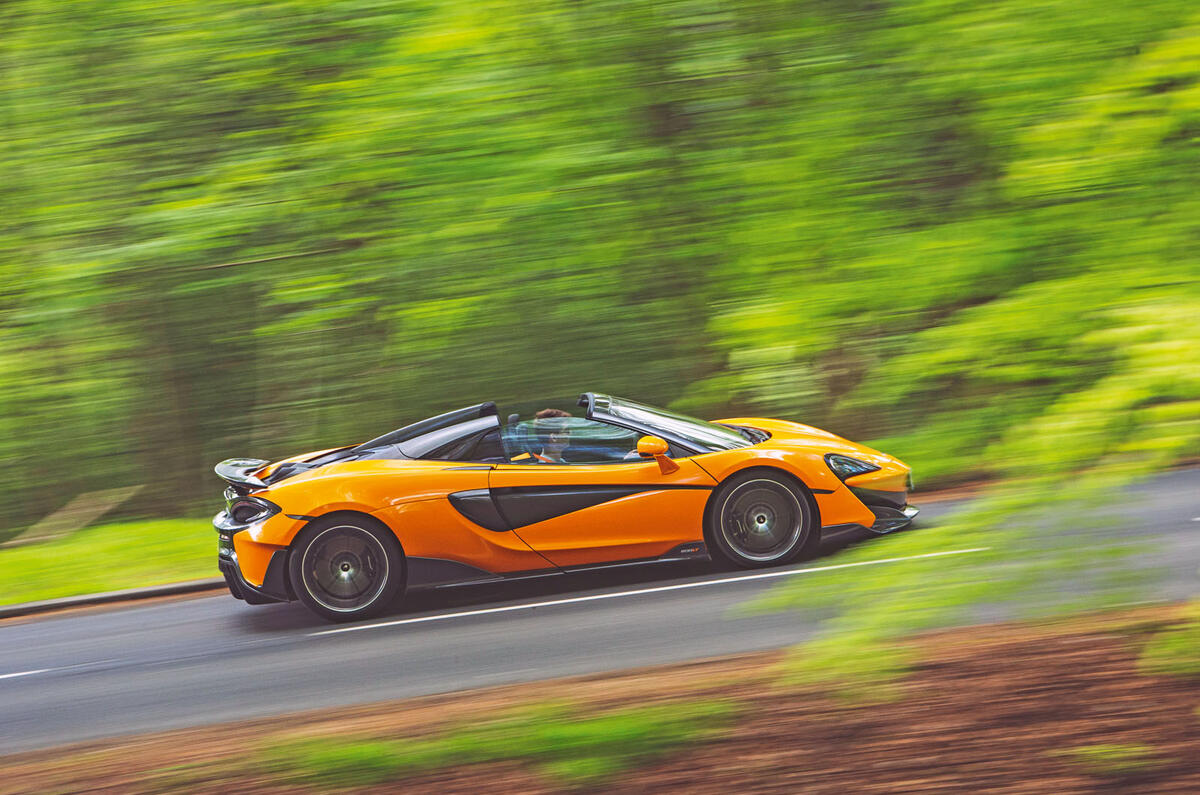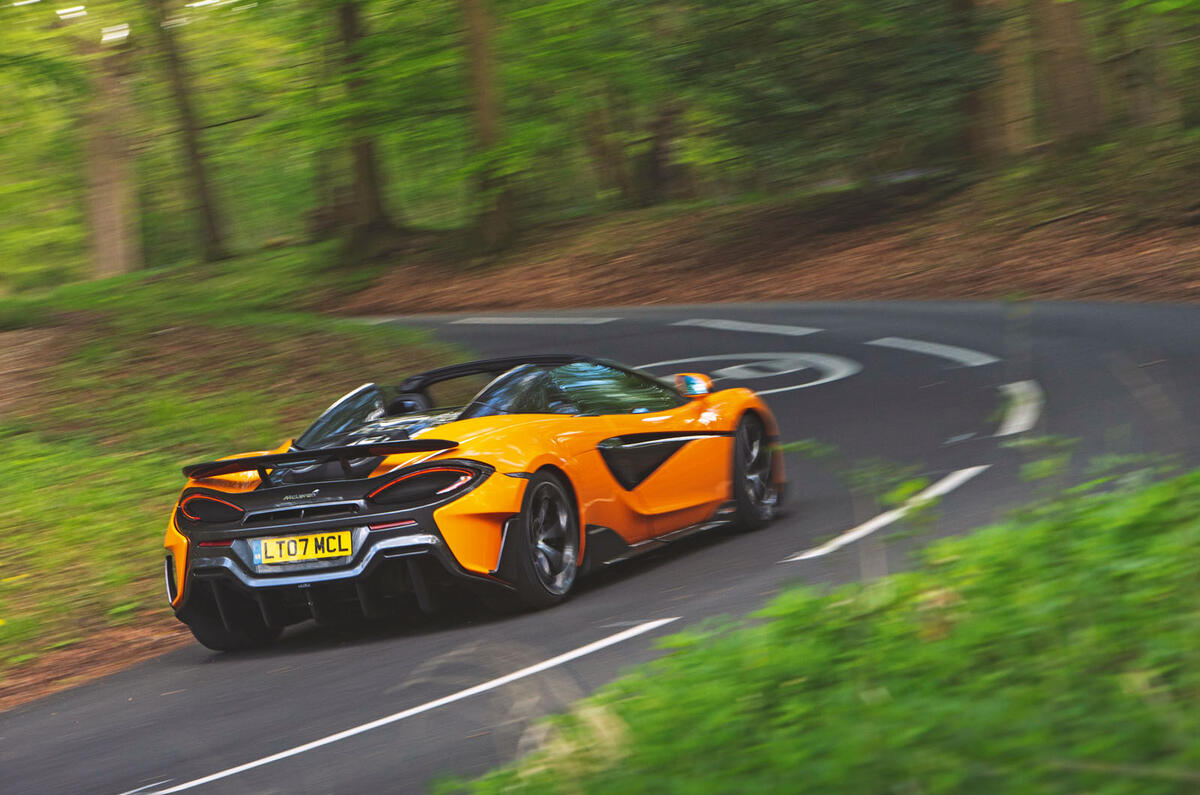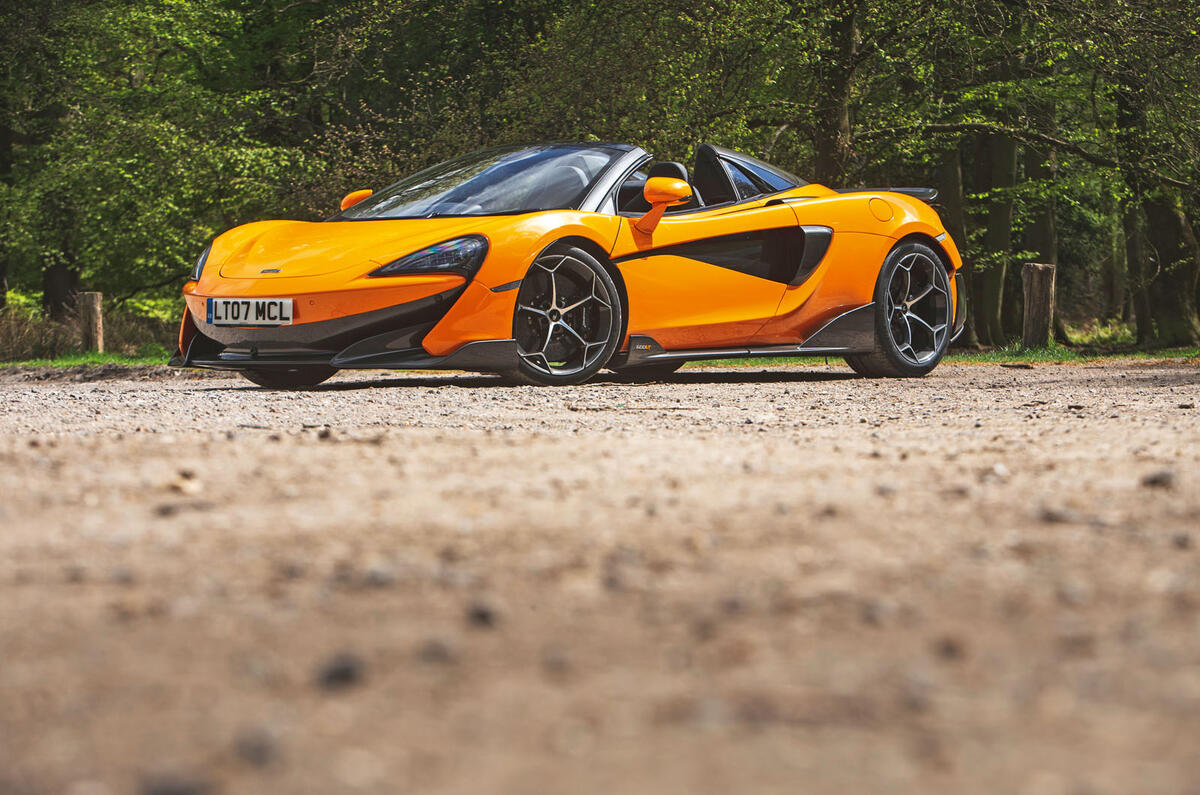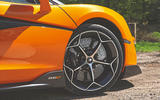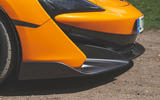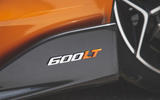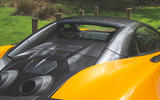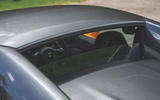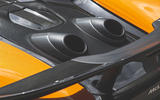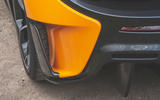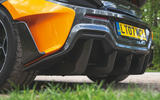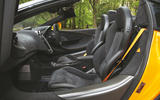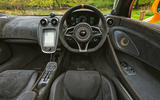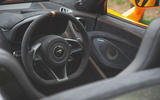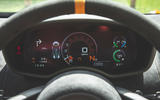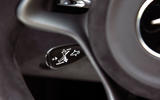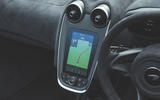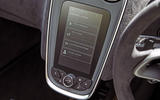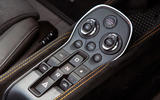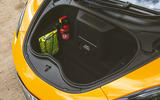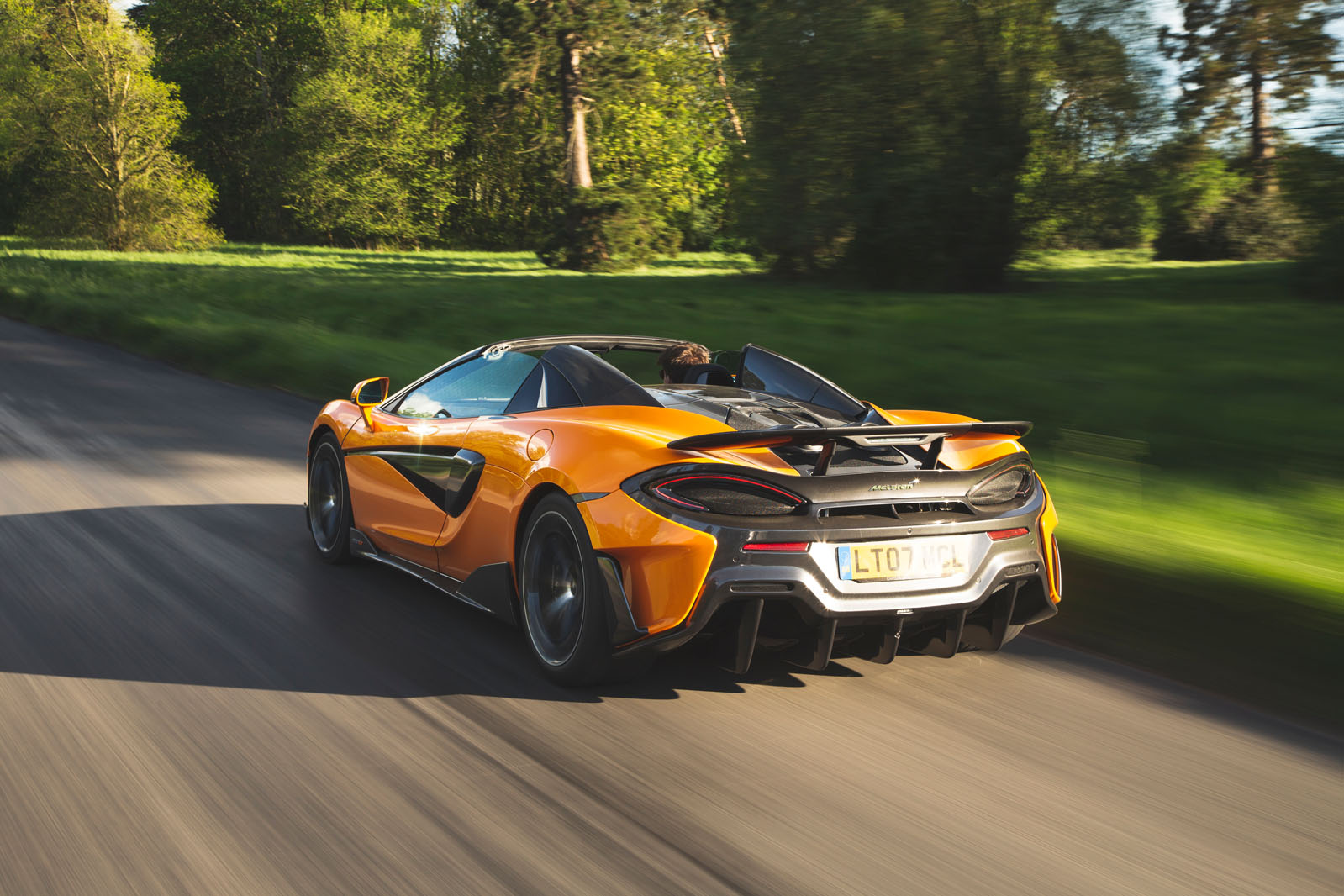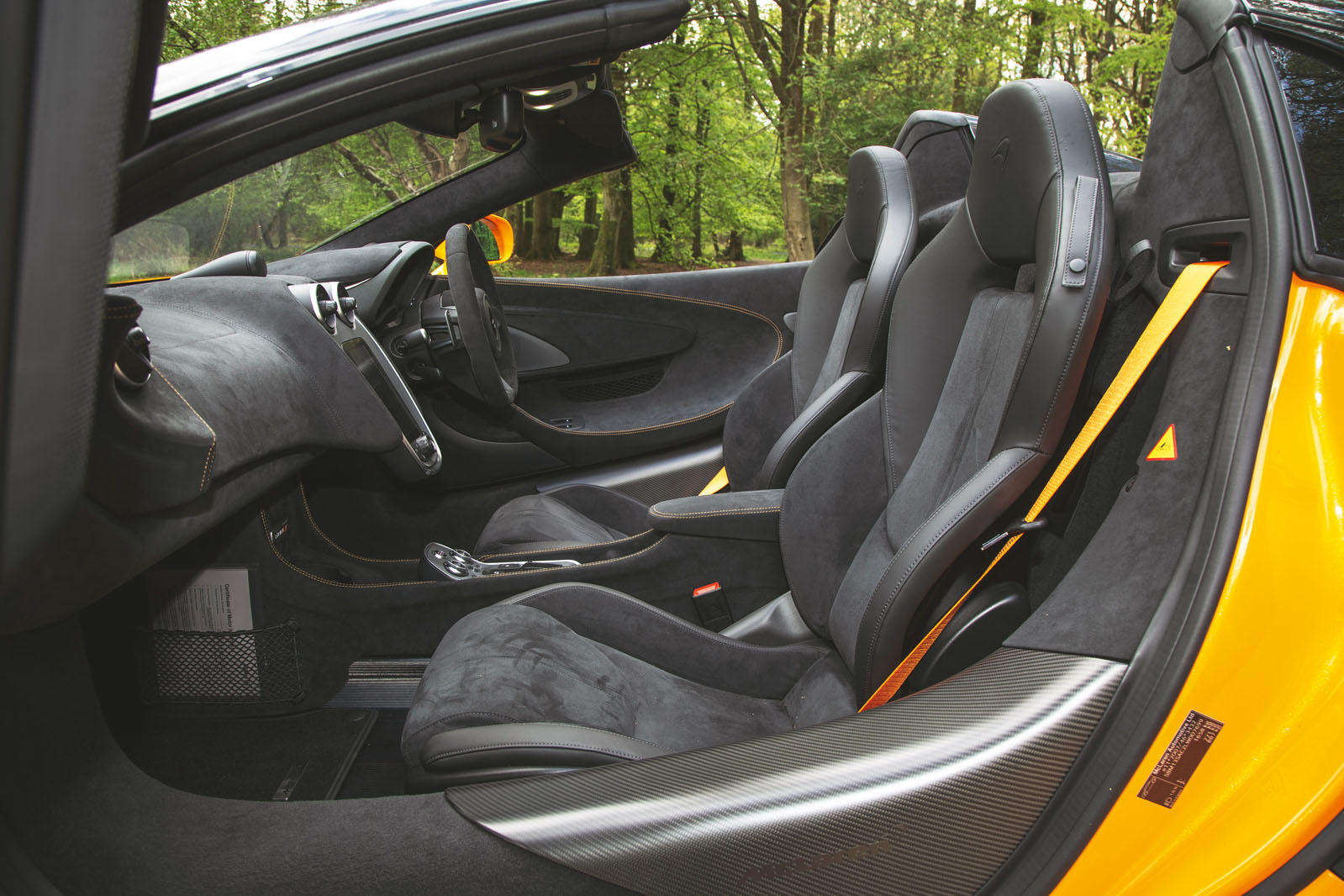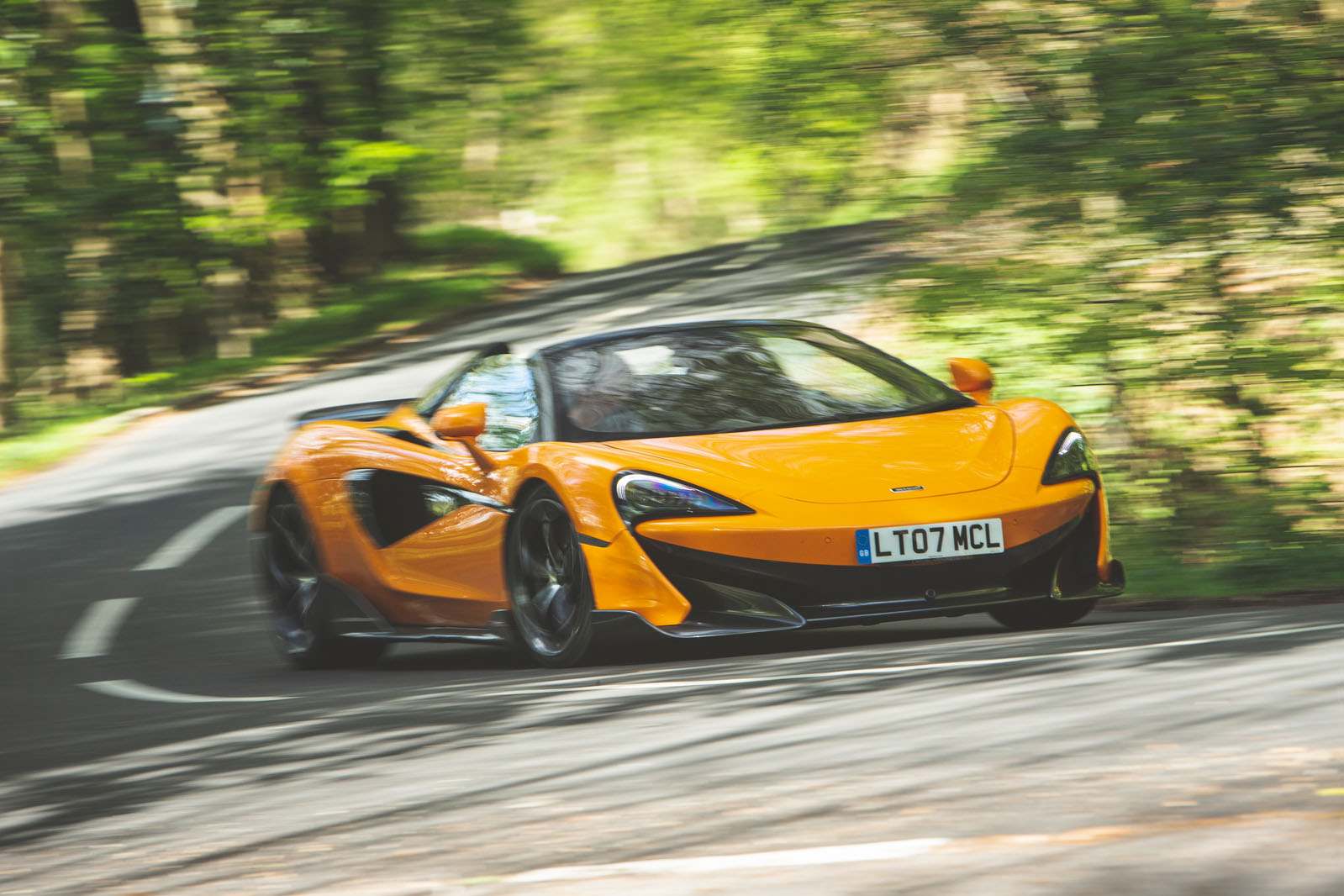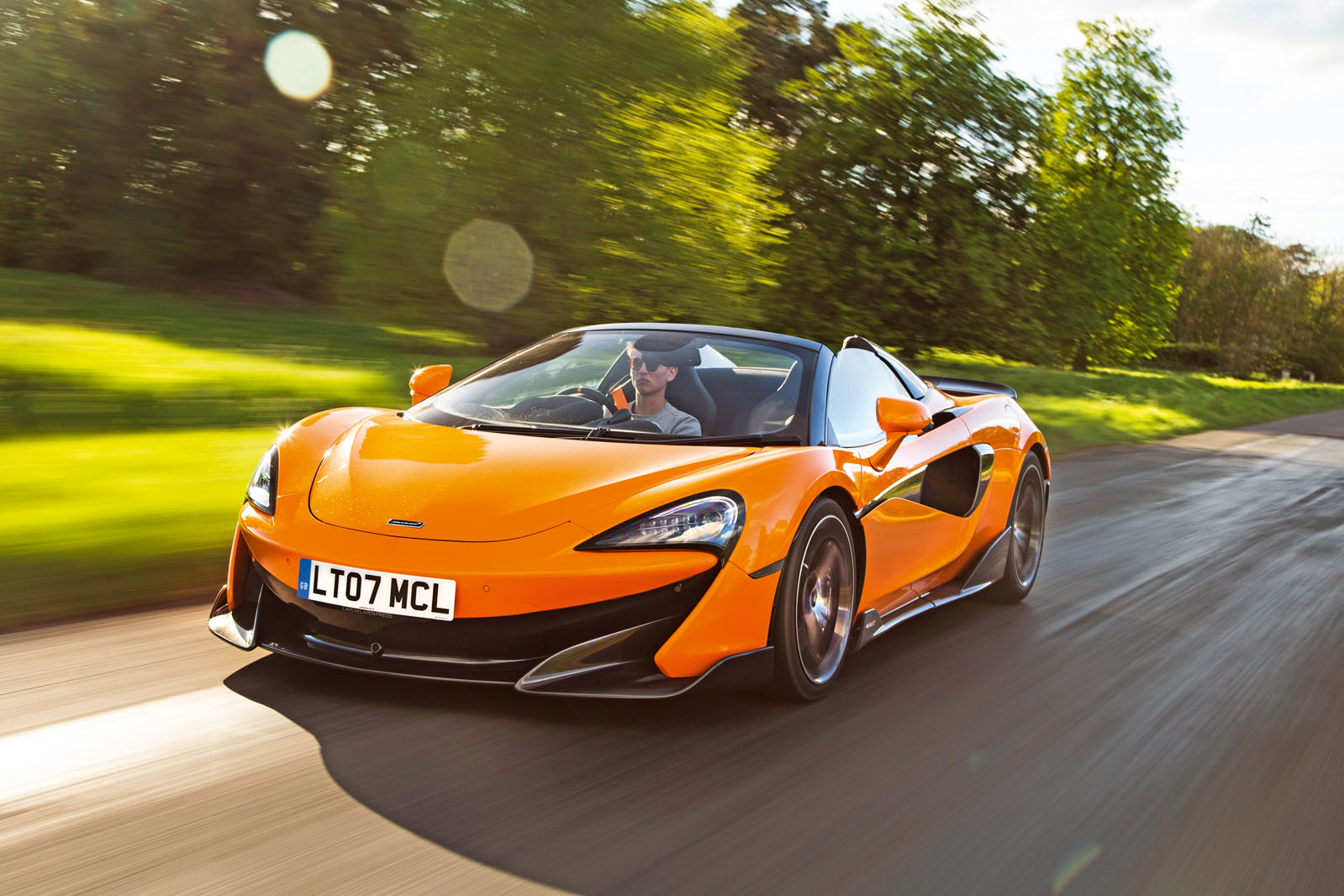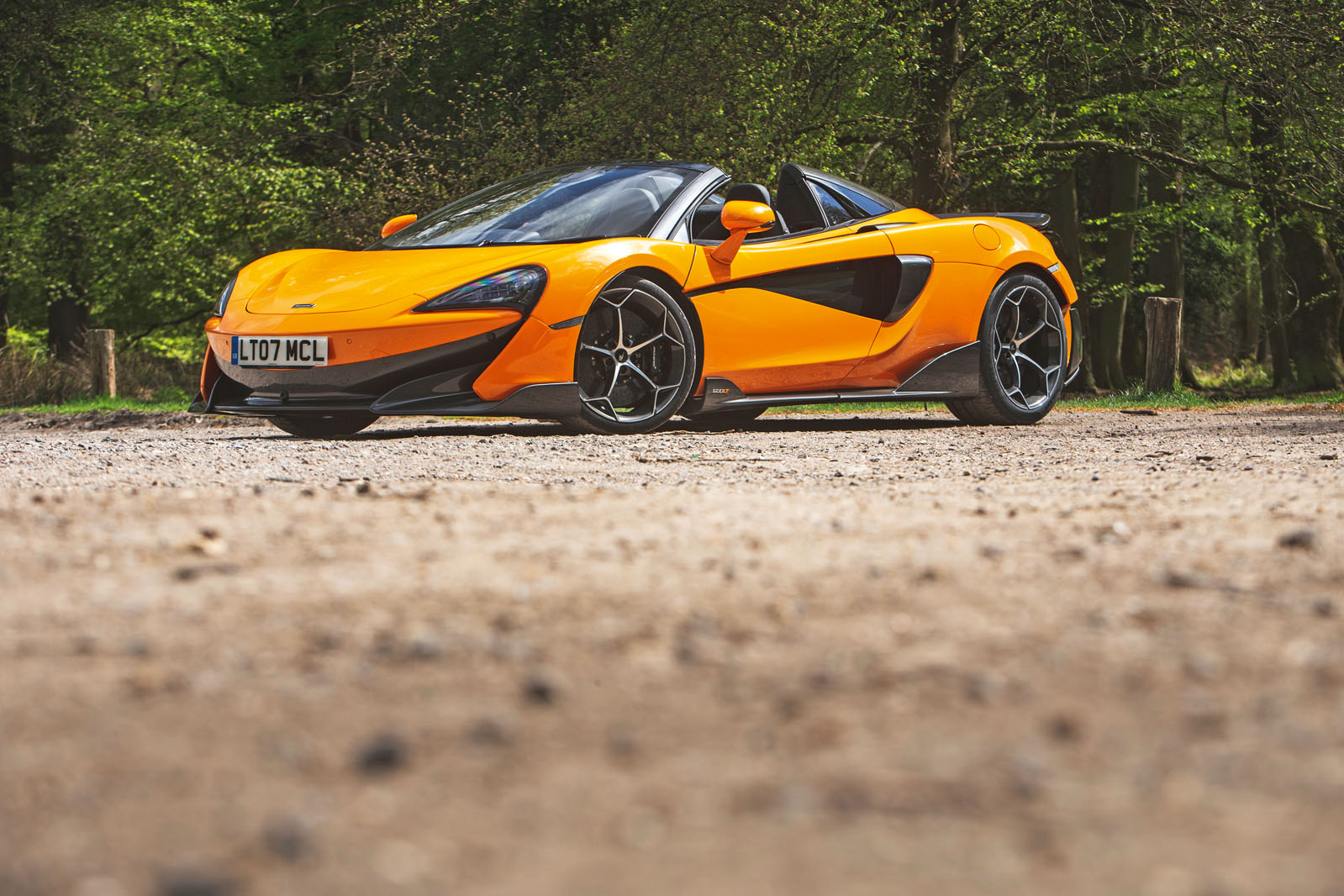Architecturally speaking, there’s little about the 600LT Spider’s cabin that differentiates it from that of the regular 570S. The housing for the portrait-oriented IRIS infotainment system still protrudes downwards from the centre of the dash, where it floats above a centre console populated by a starter button, roof controls and toggles for the drive modes. There’s a useful, if difficult to reach, cupholder there too, as well as a number of smaller storage compartments for things like keys, phones or wallets. These are handy, as the glovebox and doorbins have been stripped in order to save weight.
Track-day purists may well be pleased that the 600LT Spider does not feature satellite navigation, a sound system or air conditioning as standard. Those buyers who will not be spending all their time on circuit will be happy to hear they can be added free of charge.
These features are largely operated through the 7.0in portrait-oriented touchscreen, which runs McLaren’s in-house IRIS operating system. While not the most graphically rich software out there, it’s generally easy to use – but can be a touch clunky, particularly when switching between menus. Still, it’s preferable to Ferrari’s infotainment suites.
The Luxury Pack optioned on our test car introduced a premium Bowers & Wilkins 12-speaker audio system, which seemed redundant given the general noisiness of the McLaren’s cabin while on the move. The sound quality was at least decent when the motor wasn’t running, though.
Up front, the 150-litre front luggage compartment is lined with thinner carpet to shave further kilos. The carpet lining the cabin of our test car has been removed and replaced with Alcantara, an option that will cost you an extra £1950. Combined, however, all of these tweaks contribute to a weight saving of 7.2kg.
Air conditioning is a no-cost option (omitting it saves weight), and mercifully our car had it. The feather-light carbonfibre racing seats from the McLaren Senna can also be optioned in place of the standard regularly light carbonfibre racing seats from the P1. However, to the dismay of some of our testers, our 600LT Spider featured the £7500 Luxury Pack.
This, among other things, swaps those lightweight chairs out for heavier power-adjustable sports seats, and also introduces an electronically adjustable steering column. Admittedly, these make adapting the driving position very easy but, given the painstaking lengths McLaren has gone to to remove weight from the 600LT, their inclusion doesn’t really seem to fit with the car’s ethos.
But what a driving position it is. While positioned slightly higher than with those race seats, you sit directly in front of the thin, communicative Alcantara-clad steering wheel with an uninterrupted view out of the large front windscreen. The pedals are spaced close together, with the brake being positioned so as to encourage left-foot braking. There’s some 970mm of head room with the roof in place, which of course increases infinitely when it’s stowed away.


